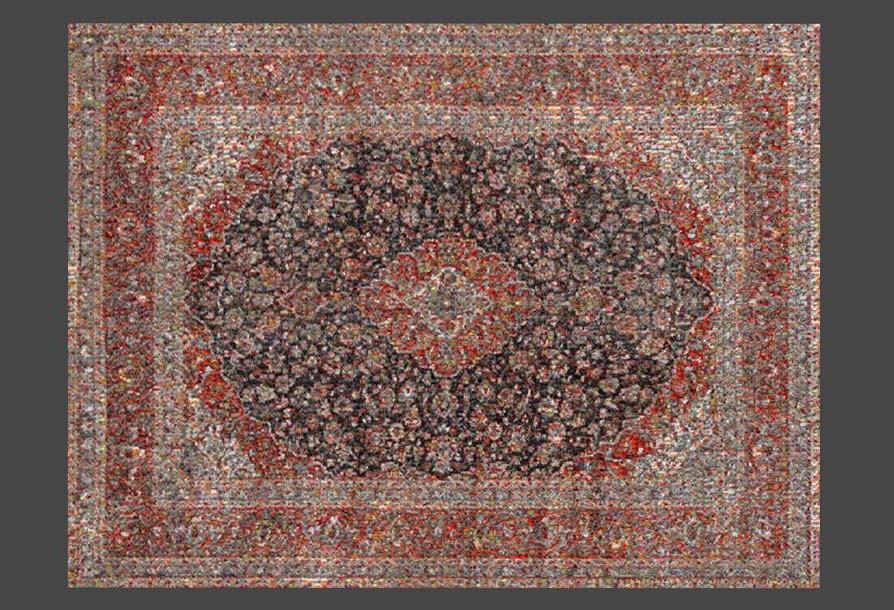
On the 10th of Muharram, an essay on the significance of religious symbolism in art

While holding a currency note in your hand, you don’t know how many people held it before you. It might have been securely put in a wallet, tucked in a shirt or trouser pocket, stored in a safe, hidden inside a pillow or kept in a pouch. It may have been given to encourage a child on her performance at school, exchanged hands at a shop counter, bestowed as baksheesh to a beggar, or paid for services rendered by a pimp or a prostitute. Equally, it could have been earned at the end of a hard day’s labour, was part of an office worker’s monthly salary or stolen from the master’s house.
Likewise, sitting in a café, travelling in a rickshaw, bus or an aeroplane, sitting at a beauty salon, one never thinks of those who must have sat on these seats before us. Somehow, they do leave their imperceptible shadow. Gabriel Garcia Marquez confided how he could not sleep in the suite reserved for Nobel laureates in Stockholm when he went there to receive the award. All night long, he was thinking about all those great writers -- from Faulkner to Hemingway to Camus to Gide -- who had slept on the same bed.
In some cases, the feeling of absent reality is quite overpowering: like the horse with black cloth and red garlands which is an essential part of processions taken out to mourn the martyrdom of Imam Hussain (ra). According to historical sources, the grandson of the Holy Prophet rode on his stallion (Zuljanah) before he was assassinated by the evil forces of Yezid.
To mark that dark day in Karbala, every year on the 10th of Muharram, Muslims especially Shiites across the world flagellate themselves in huge gatherings, with an elegant horse in the middle signifying the death of its master. Everyone whether they are part of the proceedings or outsiders know the incident happened 14 centuries ago; yet the horse in the procession evokes the emotions of believers as if it were the same horse from the battle of Karbala and is thus revered by devotees.
There are various explanations for this. One relates to how animals exist beyond a linear history. Not only do they not have the notion of past as they live in the present, for humans, too, one animal represents its entire specie. (Somewhat like the colonial attitude as per which all Chinese, all Indians and all Africans were the same -- without an individuality and any sense of history). Thus a horse that fits the description of Zuljanah is the same one as Hussain’s.
More than that, the practice is about how symbols overrule the physical world. Due to its symbolic association, the present day horse is perceived as the one used by the grandson of the Holy Prophet (pbuh) despite the lapse of time or its presence everywhere there is a Muharram procession.
A similar sensibility is seen in the world of art where artists negotiate and deal with symbols. In their essence, symbols are about recalling and offering a substitute of something that is not there.
In Pakistan, many artists like Saeed Akhtar and Salima Hashmi have employed the image of horse or the shape of Panja (open hand) which refer to the brutality of past. Beyond these, our artists have not used a large number of religiously loaded symbols. Unlike Christianity with a whole body of iconography about saints and scared personalities or Hinduism in which gods, goddesses and demons frequently appear in their two-dimensional and three-dimensional formats, for artists in the Islamic world, the absence of sacred iconography is a matter that needs to be addressed.
Art and religion are so interconnected, in fact inseparable. Since the beginning of art in Prehistoric Caves, artists have employed elements from worship in their pictorial expressions. Now with the decline of conventional religion in western culture, art has fulfilled the gap of faith (according to a theorist, art museums have turned into new cathedrals the public visits every Sunday). But, in a society like Pakistan where religion is still a strong force, artists find it difficult to locate religious symbols through which they communicate with their audience. The only practice is calligraphy which fills the gap for holy sentiments; but being a non-figurative art form, it somewhat remains an ‘outsider’ exercise in the course of modern art that emanates from the history of European culture.
Some Pakistani artists felt distanced from this traditional craft; in place of it, they sought another ‘spiritual’ expression: the art of sublime -- Abstract Expressionism.
However, our public suspects and speculate on the nature and necessity of this aesthetics. For them, it is difficult to identify with abstract compositions, formal concerns, and experiments in materials (although Gulgee blended the vocabulary of Abstract Expressionism with Islamic calligraphy). For a majority, these appear as alien practices. The viewer is hardly impressed not does she understand it.
On the other hand, a number of artists have been using images which relate to religion in a remote manner while denoting its present situation. Rashid Rana and Imran Qureshi in their works filled with blood splatters -- though in a manner different from each other -- are in a sense replacing the iconography of Karbala with the scenarios/footage of present society. In their imagery, one may feel the absence of Imam Hussain and his stallion but the element of violence and bloodshed is seen, repeatedly.